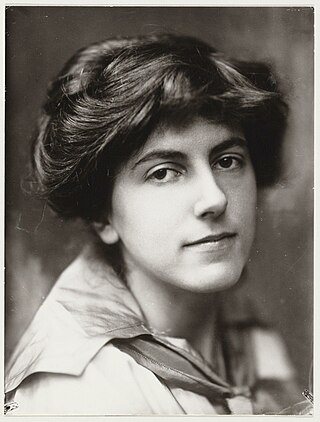Top Qs
Timeline
Chat
Perspective
Henriëtte Bosmans
Dutch composer (1895–1952) From Wikipedia, the free encyclopedia
Remove ads
Henriëtte Hilda Bosmans (6 December 1895 – 2 July 1952) was a Dutch composer and pianist.
Early life and education
Bosmans was born in Amsterdam, the daughter of Henri Bosmans (1856-1896), principal cellist of the Royal Concertgebouw Orchestra, and the pianist Sarah Benedicts, piano teacher at the Amsterdam Conservatory. Her father died when she was six months old. She studied piano with her mother and composition with Jan Willem Kersbergen, Cornelis Dopper and Willem Pijper. She became a piano teacher herself at the age of 17.[1]
Remove ads
Career
Summarize
Perspective

Bosmans debuted as a concert pianist in 1915 in Utrecht.[2] She performed throughout Europe with among others Pierre Monteux, Willem Mengelberg and Ernest Ansermet. She gave 22 concerts with the Concertgebouw Orchestra alone between 1929 and 1949.[3] She played her Concertino for piano and orchestra at a concert in Geneva in 1929.[4] In 1940, her Concertstuk for violin and orchestra was performed in concert by the Cincinnati Symphony Orchestra, with soloist Ruth Posselt, who took it up again the following year with the Boston Symphony Orchestra.[5][6]
Because her mother was Jewish, Bosmans was under the scrutiny of authorities during the German occupation, and by 1942 she could no longer perform on public stages in the Netherlands. Her aged mother was arrested and deported, but Bosmans and others intervened to rescue her from further detention. Unable to work as a musician, and needing to care for her mother through wartime famine and other dangers, Bosmans focused again on composing.[1] One of her songs, Daar komen de Canadezen ("Here come the Canadians") "became an anthem of liberation" as the war ended and Allied soldiers arrived in the Netherlands.[7][1]
After the war, Bosmans published her compositions. She wrote a series of songs for her close friend, French mezzo-soprano Noémie Pérugia, between 1949 and 1952. She was knighted in 1951, a member of the Royal Order of Orange-Nassau.[1]
Remove ads
Personal life and legacy
Summarize
Perspective

Bosmans had relationships with both men and women, with whom she often also collaborated musically. She was partnered from 1920–1927 to the Dutch cellist and conductor Frieda Belinfante, a prominent lesbian and member of the Dutch Resistance during World War II, who in 1923 premiered Bosmans' Second Cello Concerto. She was later engaged, briefly, to the violinist Francis Koene, who died from a brain tumor in 1934, before they could be married.[8] Bosmans died from stomach cancer in 1952, aged 56 years, in Amsterdam.[9] Her grave is in the city's Zorgvlied cemetery.
The Henriëtte Bosmans Prize, named after Bosmans, is an encouragement prize for young Dutch composers. The prize, consisting of €2500 (US$3500) and a performance, has been awarded since 1994 by the Society of Dutch Composers.[10] In 2017, Dutch-Canadian singer Pauline van der Roest gave a concert of works by Bosmans, in Ottawa.[7] In 2020, North American musicians Leah Plave and Dan Sato made a new recording of the complete works of Bosmans for cello and piano.[11][12]
In March 2022 (repeated August 2023) BBC Radio 3 broadcast, in its Composer of the Week series, a set of five hour-long programmes about the life and works of Bosmans, including some recordings specially made for the programme.[13]
Selected works
- Six Preludes for piano (1917–1918)
- Sonata for violin and piano (1918)
- Sonata for cello and piano (1919)
- Nocturne for cello and harp (1921)
- Piano trio (1921)
- Concerto in D for cello and orchestra (1922)
- Poème for cello and orchestra (1923)
- Concerto no. 2 for cello and orchestra (1923)
- String quartet (1927)
- Concertino for piano and orchestra (1928)
- Concertstuk for flute and chamber orchestra (1929)
- Concertstuk for violin and orchestra (1934)
- Belsazer for voice and orchestra (1936)
- Doodenmarsch for spoken voice and orchestra (1944)
- Daar komen de Canadezen for voice and piano (1945)
- Lead, kindly light for voice and orchestra (1945)
- Vieille chanson for piano (1948)
Remove ads
References
External links
Wikiwand - on
Seamless Wikipedia browsing. On steroids.
Remove ads

